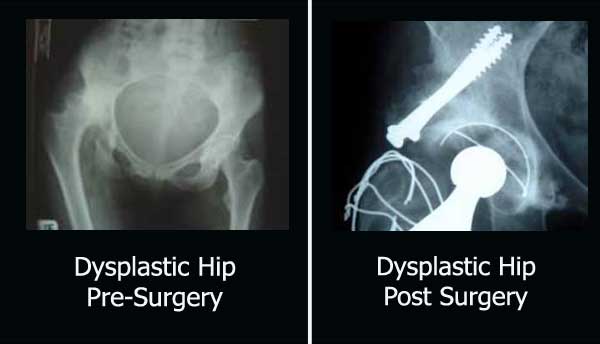Dysplasia of the Hip Joint Information for Patients
Indications
Dysplastic or shallow hips are usually caused by a congenital problem leaving the patient with a shallow socket. Such a hip maybe completely asymptomatic for years, but is more prone to the development of arthritis in the younger patients and its management requires considered experience in producing the optimum long-term results. If pain and restriction of mobility are significant and not manageable by analgesia and physical therapy and affect the patient’s quality of life operative treatment need to be carefully thought of. In dysplastic hips it is essential to reconstruct the hip joint so that a normal socket is restored wherever possible.
Operation
The operation for an arthritic dysplastic hip joint consists of reconstruction of the hip joint often using the patient’s own bone to provide a covering bone graft to reconstitute the deficiency. This can be a technically demanding procedure and requires expertise to achieve long-term satisfactory results. The operation is undertaken to achieve pain relief and mobility and secure a good fixation of the implants. It may also be possible to correct any leg length discrepancy that maybe present. The femur is often deformed and may need complex surgery to correct any deformity present. Hip resurfacing or hip replacements are both techniques that can be performed in this condition. The type of surgery carried out depends upon a number of factors that should be clearly discussed with your surgeon before embarking on this form of hip reconstruction.
Results
The results of hip reconstruction for dysplastic hip joints can be as good as those for hip replacements or hip resurfacings for osteoarthritis. The results aim to achieve relief of pain and a return to normal mobility. With Dysplasia of the hip joint there may be significant shortening of the affected leg. It is often possible with appropriate surgery to correct or at least significantly improve the length of the affected leg to match the length of the normal hip.